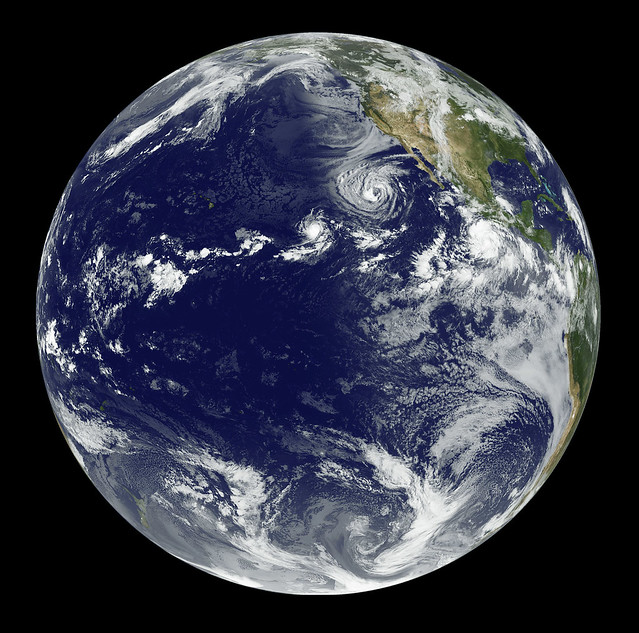Hello everyone,
You've probably heard of El Niño and La Niña before. Especially El Niño has been discussed a lot recently in the media. El Niño and La Niña are part of a climate pattern found in the Pacific Ocean that occurs roughly every two to seven years. However there is no real regularity or predictability further into the future. They affect global weather patterns and economies.
So first of all, let's cover what is actually happening here. In normal circumstances trade winds blow across the Pacific from South America to Asia. This pushes warm water from South America to Asia meaning that the ocean is a lot cooler off the west coast of the Americas compared to the east coast of Asia. The cold water off the coast of the Americas comes from the ocean's depths and is filled with nutrients. During El Niño those driving trade winds become weaker or even stop entirely. Scientists haven't worked out what triggers this change. With no trade winds pushing the warm water towards Asia, the west coast of the Americas becomes warmer. El Niño was first recorded in the 1600s by local fishermen. It often peaks in December and lasts around nine to twelve months. El Niño also leads to a change in air pressure, with the atmospheric pressure over the easter tropical Pacific decreasing. This phenomenon is called Southern Oscillation. As it occurs simutaneously with El Niño the term "El Niño-Southern-Oscillation" (short: "ENSO") was coined.
But what are the effects of El Niño? As already mentioned the waters off the west coast of the Americas become warmer. This causes a change in weather across the Americas. Northern USA and Canada become warmer and dryer. The southern parts of the US experience heavy rainfall and increased flooding. El Niño causes a lot of erosion and flooding in coastal areas. It disrupts global air circulation and affects the monsoon season in Asia. The wetter, warmer conditions become perfect conditions for diseases such as malaria and cholera to spread. The areas that experience droughts also have a higher risk of severe wildfires. Because the nutrient-rich cold water no longer comes up to the surface along the coast of South America, this coast has a lot less nutrients. This leads to less plankton, which stresses the entire food web. Most fish species migrate or die. Local economies depending on fishing such as Peru suffer greatly.
On the other hand, there is La Niña. It's the complete opposite of El Niño and is caused by the trade winds becoming stronger than normal. This makes Asian coasts even warmer and American coasts even colder. The American coast has more nutrients because of more water swelling up from the depths. La Niña is responsible for droughts across southern USA, floods in Canada and northern USA and a more intense hurricane season across North America. Not only the Americas are affected, there is often flooding in Australia, Africa and northern Brazil. The monsoon season is once again affected.
A common question is how this affects or is affected by climate change. First of all, it's important to remember that this climate pattern has been around long before humans and is therefore not caused by man made climate change. It is visible in coral reef records going back for thousands of years. However it is worth noting that El Niño has been stronger in recent decades. It is unclear whether this is because of climate change. What is clear is that climate change plus the effects of El Niño is a disastrous combination. While the future is unpredicable, there are two probable possibilities. One is that climate change will cause extremely strong El Niños and La Niños, causing massive destruction. The other possibilty is that climate change will completely change the weather patterns globally and El Niño and La Niña might not exist further into the future.
We hope you enjoyed this post. Merry Christmas and Happy Holidays!
Your Green World Blog Team💚
https://oceanservice.noaa.gov/facts/ninonina.html
https://education.nationalgeographic.org/resource/el-nino/
https://education.nationalgeographic.org/resource/la-nina/
https://www.dw.com/en/how-does-climate-change-affect-el-nino-and-la-nina-cycles/a-64534667
Images:
This image, owned by Rawpixel Ltd (on flickr.com), is licensed under CC BY 2.0.


Comments
Post a Comment